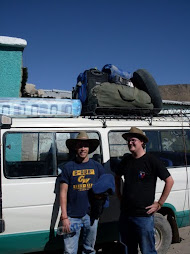Hello all,
This week I finally got to do some talking with town authorities on the subject of small business in Madrigal, which is my trained and educated specialty, instead of youth development which is where most of my work has been directed so far. I will still work in this field as no work with adults begins before seven o’clock here due to the farm-centered lifestyles of the people. The organization that is showing the most promise is Turismo Viviencial, which centers on a type of live-in tourism that pretty much just attracts Europeans at the moment. This form of tourism involves people coming to live in a home in another country for a period of time, from a week to a couple of months, to get an idea of the habits and customs of a people and their surroundings. Since we are in one of the most beautiful spots in the world this is a big opportunity for the town. Still, there is a lot of footwork and restructuring to do before we can get a move on things.
On other news this week, I’ve been a bit under the weather but still doing everything I need to. The amusing part of all of this is when anyone hears me cough they have another natural remedy they would like me to try to cure it. I had to have received more than ten amateur prescriptions this week. I also pinned down a learning aid my high school English students enjoy- using activities centered on song lyrics. It’s good for listening comprehension and vocabulary building, and I had a completely quiet classroom for the first time since I began!
It just occurred to me that I haven’t really got around to describing the town. It is seated in a depression surrounded by mountains, the most impressive of which is an extremely jagged peak that is right next to where the canyon really plunges down. You can’t really see the canyon from the town because you need to descend a series of step-like slopes full of farm fields to get to it, a difficult descent. The jagged peak bears an Incan fortress, Chimpa, overlooking the deepest part of the canyon. Also on that side are ancient rock tombs including a mummy, cave paintings, a ghost town, a rock forest, and a forest of puyas, plants that flower once a century, Closer to the town is an abandoned mine and then kilometers of farm fields.
The town itself is built around a central plaza that has a small park with a fountain, a few statues, and bushes cut in the shapes of animals and objects. For the most part small stores and governmental buildings populate the square and residential houses radiate outwards. Towards the edge of town are a large public meeting hall and the schools. The schools are single-story complexes of buildings built around a cement common area. Most houses are built of painted adobe with tin roofing, including mine, although there are still some of the traditional stone, straw-roofed houses around.
As far as amenities go, we have streetlights and for some, including my family, thankfully, running water. The roads are still primarily dirt, although we are building a stone and asphalt one entering town. The stores don’t have a huge selection, but you can find most of your amenities and fill in the gaps by going into the closest big town, Chivay. Madrigal has all of the hallmarks of a small town, but it has everything I need and I have certainly never lived in a place so naturally beautiful.
